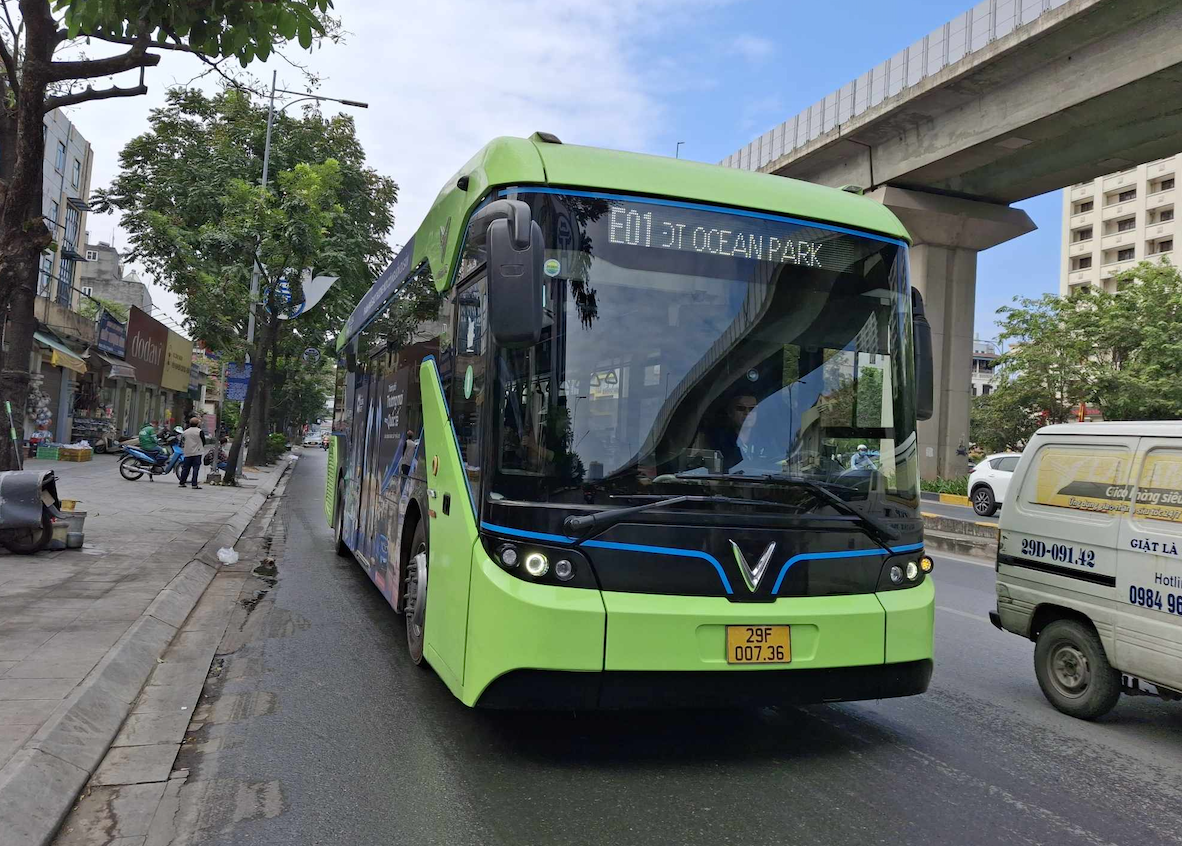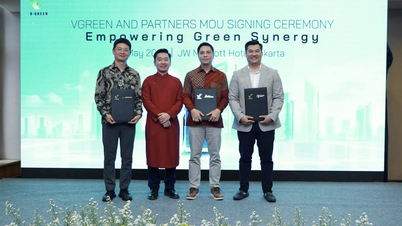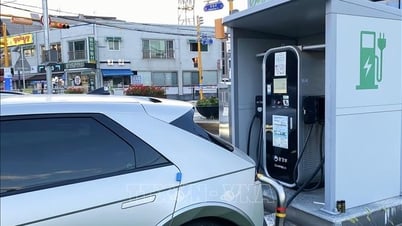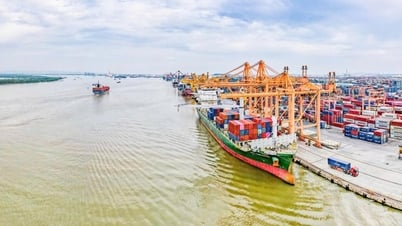The transition to electric vehicles could reduce the environmental costs of local air pollution in Vietnam by $30 million by 2030 and $6.4 billion by 2050.
Contribute to reducing pollution
The World Bank has just released the report "Vietnam: Proposal for a national roadmap and action plan on transitioning to electric vehicles", on the morning of November 22.
This report states that in the transportation sector, the combustion of gasoline and diesel in vehicles using internal combustion engines emits a significant amount of air pollutants such as nitrogen oxides, sulfur oxides and particulate matter with a diameter of 10 micrometers or less (PM10).
These emissions contribute to local air pollution, leading to serious environmental damage and threatening people's health.
Accordingly, road transport is by far the largest contributor to greenhouse gas emissions, accounting for about 85% of the transport sector's emissions. Water transport accounts for 9% of greenhouse gas emissions due to the burning of FO and diesel, while air transport accounts for about 4.5% due to the burning of jet fuel.
In terms of road transport alone, in 2022, two-wheeled vehicles (motorbikes and motorbikes) account for 28% of emissions; buses and inter-provincial coaches account for 11%; cars account for 6%; and trucks of all sizes contribute up to 56% of road transport emissions.
"The fact that trucks of all sizes, buses and inter-provincial coaches, although small, account for 67% of emissions is because, on the same distance, these vehicles use many times more fuel than cars or motorbikes. Not to mention, most of the trucks, buses and coaches today are old and have a long lifespan, so the amount of emissions is also much larger than cars," Mr. Bowen Wang - the main author of this report explained further.

Therefore, this report highlights the key benefit of switching to electric vehicles is avoiding the emission of air pollutants from the operation of internal combustion engine vehicles by switching to electric vehicles.
Vietnam is among the countries facing a rapidly increasing risk of air pollution. Notably, transportation is one of the main factors contributing to this risk.
Restricting "mobile emission stations"
According to the World Bank study “Clean Air for Ha Noi: What Will It Take?” in 2022, emissions from transportation activities contribute about 25% of PM2.5 fine dust in Hanoi .
By achieving the SPS electric vehicle adoption scenario (a policy scenario that simulates pathways in which all electric vehicle adoption targets and measures outlined in Decision 876/QD-TTg are achieved), Vietnam can avoid 302 tons of sulfur oxide emissions, 1,857 tons of nitrogen oxides, and 181 tons of PM emissions by 2030.
By 2050, as the transition to electric vehicles extends to cars, trucks and long-haul buses, this impact will increase by a factor of 162 for sulfur oxides (about 48,842 tonnes), a factor of 66 for nitrogen oxides (122,079 tonnes) and a factor of 48 for PM10 (8,607 tonnes).
This level of air pollution reduction would save Vietnam a total of about $30 million in environmental damage costs by 2030, rising to $6.4 billion by 2050, the report said.
In fact, in recent days, air pollution in major cities in our country has always been at an alarming level. Even on October 7, both Hanoi and Ho Chi Minh City were among the most polluted major cities in the world. In particular, the air pollution index in Hanoi was 174 - the most polluted level in the world; this index in Ho Chi Minh City was 147 - ranked 7th in the world, the air quality is not good for sensitive groups.
Experts say that Hanoi, like many cities in Vietnam, is seriously polluted. One of the main causes of air pollution comes from personal vehicles.
Accordingly, if each fossil fuel-powered car or motorbike on the road is considered a mobile emission station, then Vietnam has nearly 80.6 million such emission stations (according to the number of registered vehicles as of the end of 2023). Of these, there are more than 6.3 million cars and 74.3 million motorbikes.
Therefore, converting or even “closing” these emission sources is necessary and urgent. Along with that, providing a roadmap for switching to electric vehicles using green energy to reduce greenhouse gas emissions.
This is not only in line with global trends but also an important task if Vietnam wants to achieve the goal of achieving net zero emissions by 2050 as committed by the Government .

Source: https://vietnamnet.vn/chuyen-sang-xe-dien-de-giam-o-nhiem-khong-khi-viet-nam-se-tiet-kiem-6-5-ty-usd-2344610.html


![[Photo] Party and State leaders visit President Ho Chi Minh's Mausoleum](https://vphoto.vietnam.vn/thumb/1200x675/vietnam/resource/IMAGE/2025/5/19/d7e02f242af84752902b22a7208674ac)




![[Photo] Special flag-raising ceremony to celebrate the 135th birthday of President Ho Chi Minh](https://vphoto.vietnam.vn/thumb/1200x675/vietnam/resource/IMAGE/2025/5/19/1c5ec80249cc4ef3a5226e366e7e58f1)


















































































![[VIDEO] - Enhancing the value of Quang Nam OCOP products through trade connections](https://vphoto.vietnam.vn/thumb/402x226/vietnam/resource/IMAGE/2025/5/17/5be5b5fff1f14914986fad159097a677)







Comment (0)